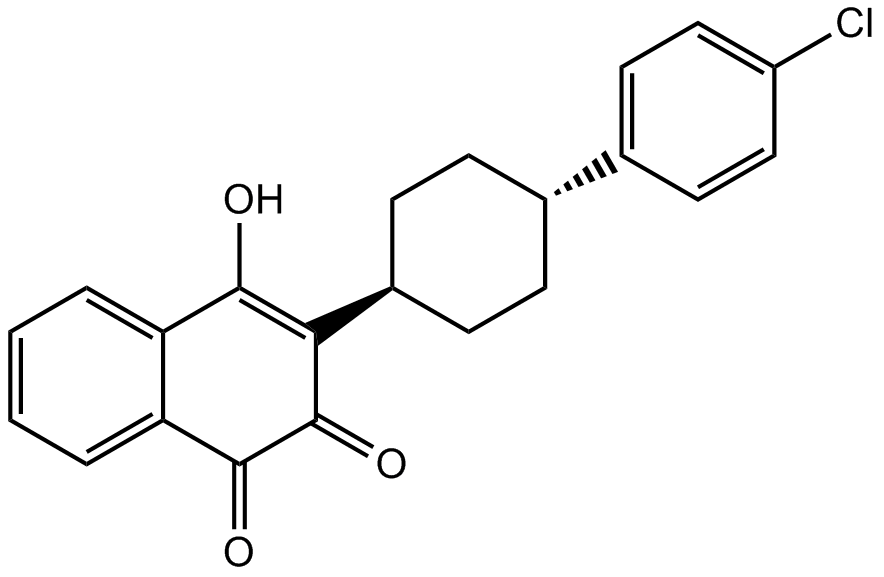Atovaquone (Synonyms: BW 566C, BW 556C-80) |
| Catalog No.GC17903 |
unique naphthoquinone with broad-spectrum antiprotozoal activity
Products are for research use only. Not for human use. We do not sell to patients.

Cas No.: 95233-18-4
Sample solution is provided at 25 µL, 10mM.
Atovaquone is a medication used to treat or prevent for pneumocystis pneumonia, toxoplasmosis, malaria, and babesia.Target: AntiparasiticAtovaquone (atavaquone) is a chemical compound that belongs to the class of naphthalenes. Atovaquone is a hydroxy-1,4-naphthoquinone, an analog of ubiquinone, with antipneumocystic activity [1]. Atovaquone is an anti-protozoal mitochondrial electron transport inhibitor; Antimalarial; Antipneumocystic, and has also been used to treat toxoplasmosis. It acts by inhibiting the cytochrome bc(1) complex via interactions with the Rieske iron-sulfur protein and cytochrome b in the ubiquinol oxidation pocket [2]. Atovaquone is a unique naphthoquinone with broad-spectrum antiprotozoal activity. It is effective for the treatment and prevention of Pneumocystis carinii pneumonia (PCP), it is effective in combination with proguanil for the treatment and prevention of malaria, and it is effective in combination with azithromycin for the treatment of babesiosis [3].
References:
[1]. Looareesuwan, S., et al., Clinical studies of atovaquone, alone or in combination with other antimalarial drugs, for treatment of acute uncomplicated malaria in Thailand. Am J Trop Med Hyg, 1996. 54(1): p. 62-6.
[2]. Kessl, J.J., et al., Molecular basis for atovaquone binding to the cytochrome bc1 complex. J Biol Chem, 2003. 278(33): p. 31312-8.
[3]. Baggish, A.L. and D.R. Hill, Antiparasitic agent atovaquone. Antimicrobial agents and chemotherapy, 2002. 46(5): p. 1163-1173.
Average Rating: 5 (Based on Reviews and 17 reference(s) in Google Scholar.)
GLPBIO products are for RESEARCH USE ONLY. Please make sure your review or question is research based.
Required fields are marked with *




